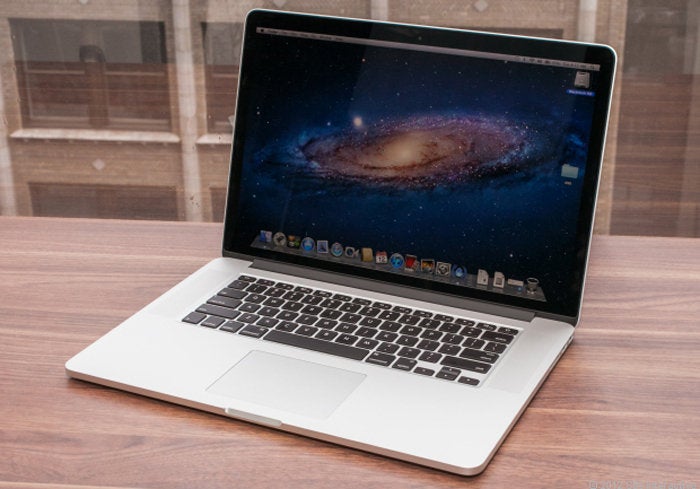Apple Macbook Pro Hard Drive Upgrade
It might seem incredible, but today Apple only sells a single MacBook Pro that still uses a hard drive. As of Apple’s update in October, all of the 13-inch and 15-inch MacBook Pros — aside from the single non-Retina display model — have all moved over to solid-state storage. And that lone 13-inch MBP, with its 500GB 5400 RPM hard drive is clearly not long for this world. At $1200 the last-man-standing non-Retina Pro is only $100 cheaper than the next model up and it lacks both the Flash storage and high-resolution display that make the new MBP so good.
- How to upgrade your MacBook Pro with an SSD. Step 1: Prep the SSD. Start by connecting the SSD to your computer with a dock or cable. Once it's connected, launch Disk Utility (searchable through. Step 2: Remove the hard drive.
- Both the standard Apple 2006-2012 Macbook and Macbook Pro hard drive are an industry standard 2.5 inch notebook drive. They are physically exactly the same physical size. Can I use any SSD here to upgrade my 2012 (Retina) to 2017 Macbook Pro? From the Retina 2012 Macbook Pro Apple started using a proprietary version of a M.2 SSD.
If you’re here you’re probably not in the market for a new MacBook Pro. You likely have an aging laptop that you’re trying to breath some life into. Well, good news, there is no better upgrade you can make to a laptop today than upgrading the hard drive. This article will explain how to upgrade your MacBook Pro’s hard drive, allowing you to drop in a bigger HDD, a speedy HHD, or super-fast SSD.
Even if you wouldn’t think twice about cracking open a desktop to drop in a new video card, you might pass on doing anything with a laptop — their cramped interiors and specialized hardware are instant turn-offs. And if the laptop in question is Apple’s MacBook Pro, you might dismiss the idea immediately. After all, Apple doesn’t have an upgrade-friendly reputation.
Don’t let that stand in your way. You can give your MacBook Pro faster storage in just a few steps. Doing so will require some minor surgery and void your warranty, but you’ll almost certainly find the process easy enough to be worth the (minor) risk.
Since this story first ran in 2007(!), Apple has released multiple new versions of the MacBook Pro, each of which differs just slightly from the others. We’ll run through each of them, but the important thing to know is that the process is similar from one generation to the next. Of course, the big change took place when the Retina display design. This brought a thinner chassis and was when Apple stopped using hard drives in its laptops. After this point we can no longer help you out, as the storage is not based in a 2.5-inch form-factor and in most cases is not upgradable. The break point for this was:
- 15-inch MacBook Pro with Retina: First released June 2012, model MacBookPro10,1
- 13-inch MacBook Pro with Retina: First released October 2012, model MacBookPro10,2
Apple explains how to replace the hard drive starting on page 35 of the 13-Inch, 15-Inch, and 17-Inch 'Mid-2009', 13-Inch, 15-Inch, and 17-Inch 'Mid-2010,' and 13-Inch, 15-Inch and 17-Inch 'Early 2011' MacBook Pro User Guides, respectively, and this provides most of what you need to know to upgrade the default storage. If you have an old MacBook Pro with one foot in the grave, the single best thing you can do to breathe new life into it is replace its traditional spinning hard drive with a solid-state drive.
Upgrading the MacBook Pro’s hard drive
How To Figure Out If You Can Upgrade Your MacBooks's Hard Drive
Before you get started, you’ll want to back up your data. If you have an external hard drive and a recent version of OS X, Apple’s Time Machine software is the easiest way to go — you probably already have it working for you. Otherwise, check out SuperDuper to make a backup of your entire disk.
Once you’ve secured any data you’re going to want to keep, you’re ready to begin the upgrade process. Exactly what you’ll have to do differs depending on when you bought your system. When you’ve discerned that, click on the links below to go to the page for your particular model. If you’re not sure when you got your MacBook Pro, turn it over and use the descriptions below to help you figure it out.

First generation (January 2006 – October 2008): The battery cover opens with two tabs. The bad news is, you’ve got the most involved work ahead of you. The good news is, it’s still not very hard.
Second generation (October 2008 – June 2009): The second generation MacBook Pro is the first to have unibody construction. It’s also the easiest to upgrade — this version only has one latch to pull open the case.
Apple Macbook Pro Ram Upgrade
Third generation (2010 and on, pre-Retina MBPs): In terms of difficulty, this MacBook Pro splits the difference between the other two models: You can identify it by the single panel held on by ten screws. Once you’re inside, however, it’s a snap to swap out the hard drives.

Alternatively, you can continue with this article for a guide to upgrading the first, second, and then third generation MacBook Pros. If you want larger pictures try the links above, if you want to run through of each model stick with this article…
- 1 of 8